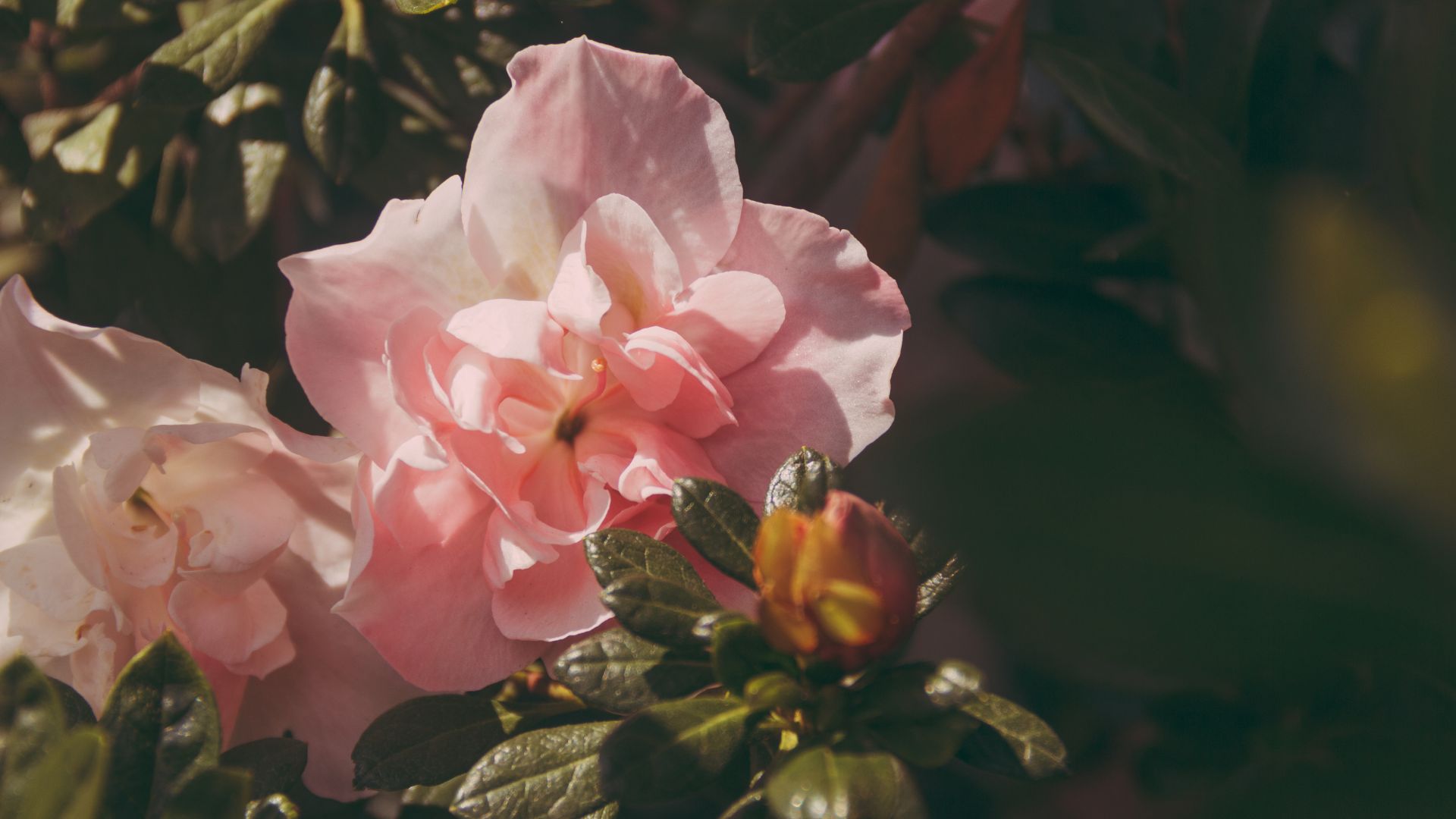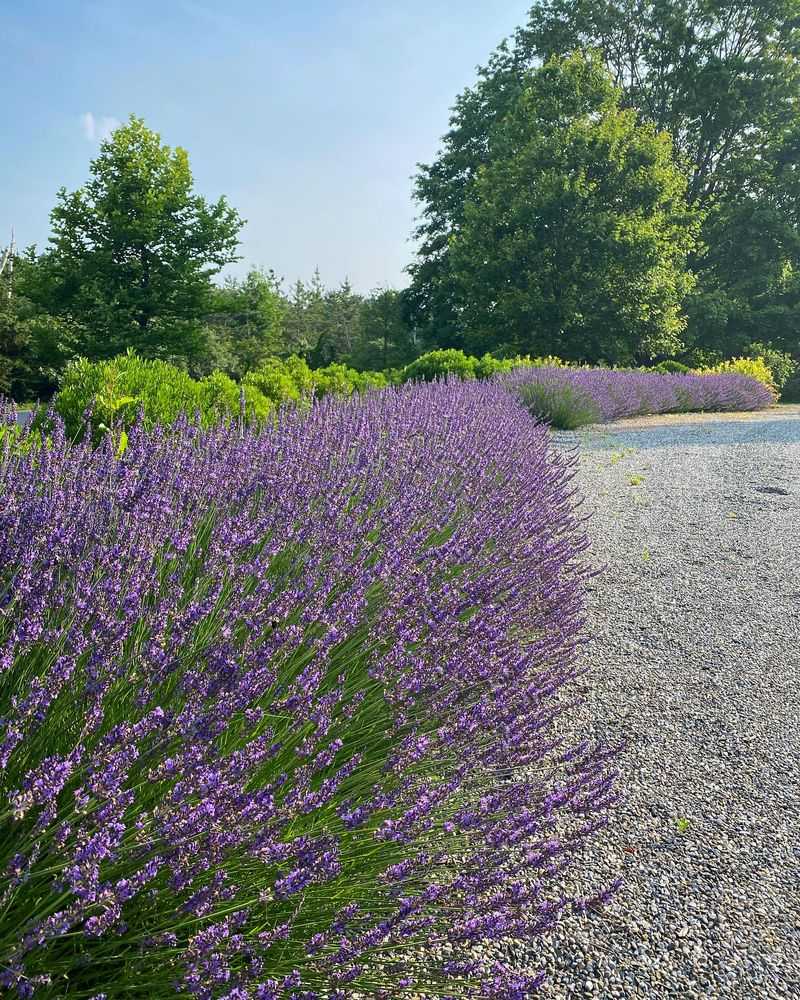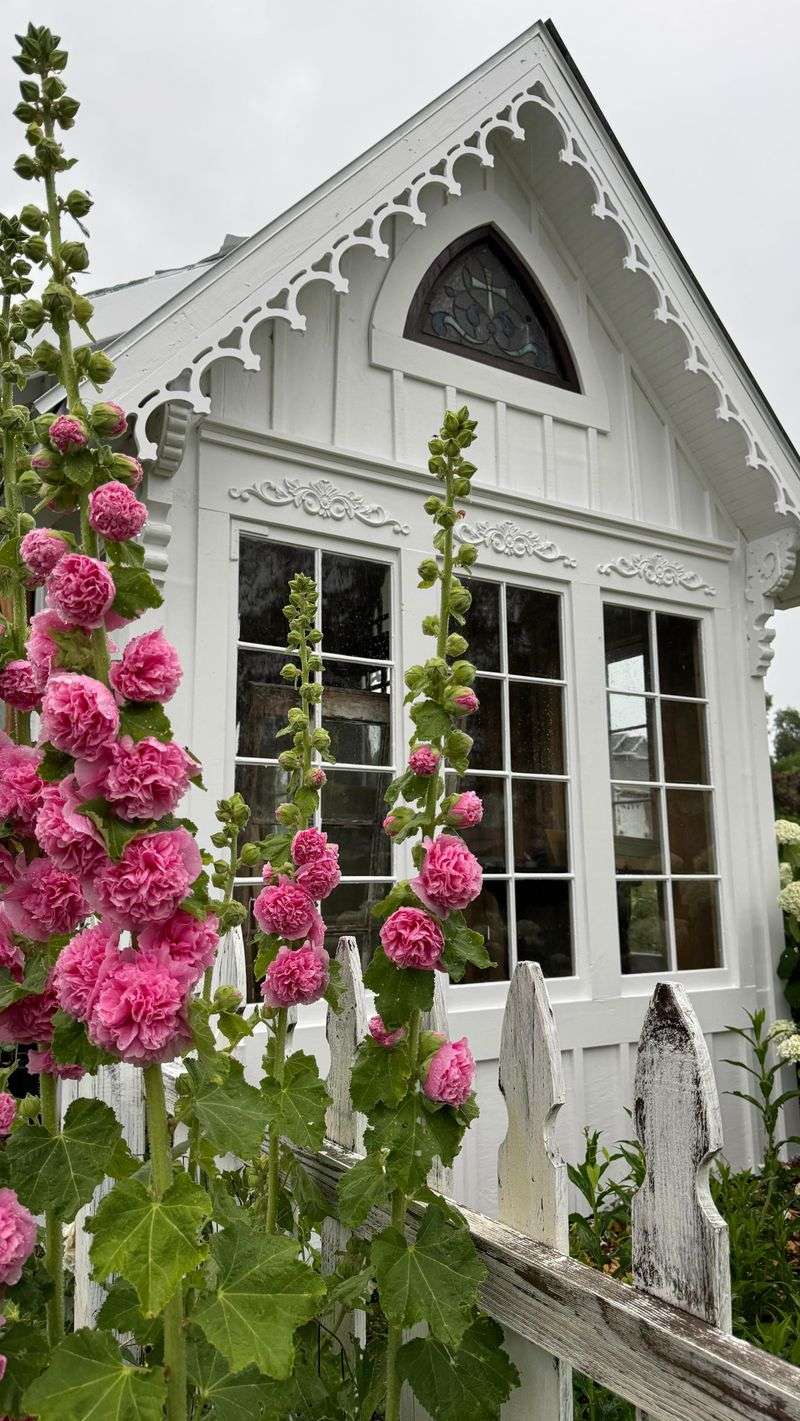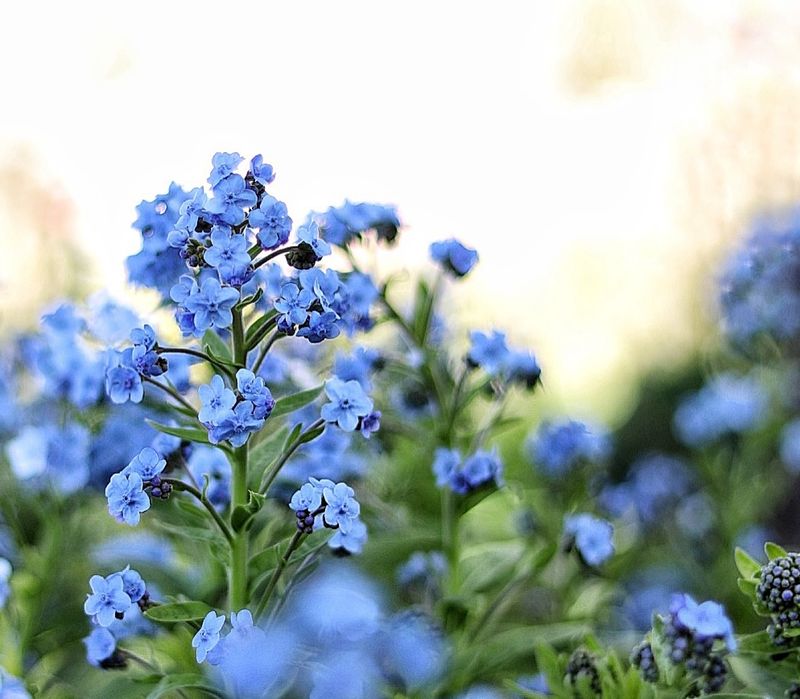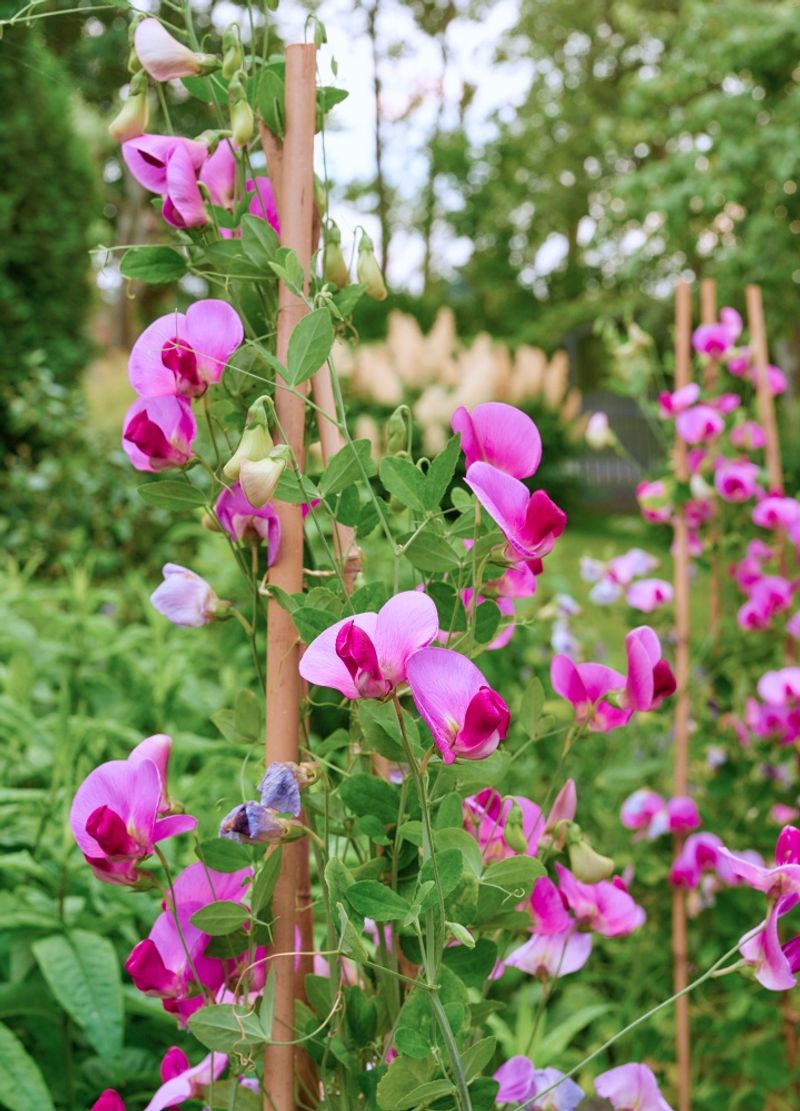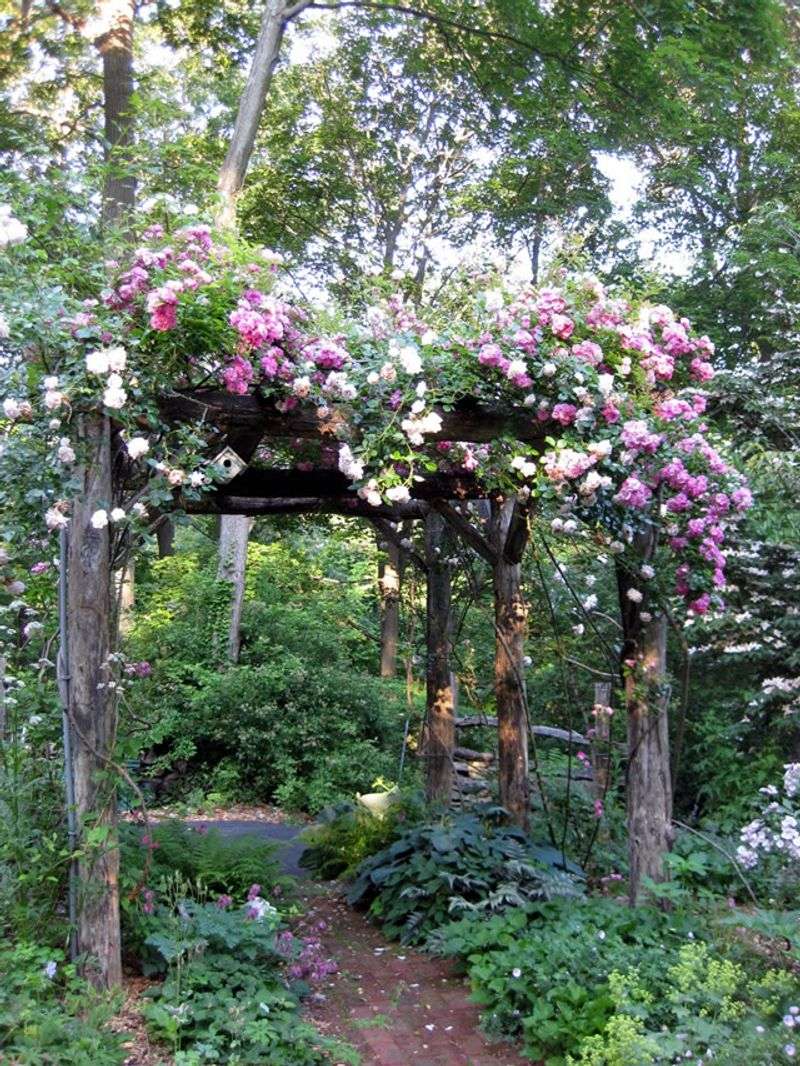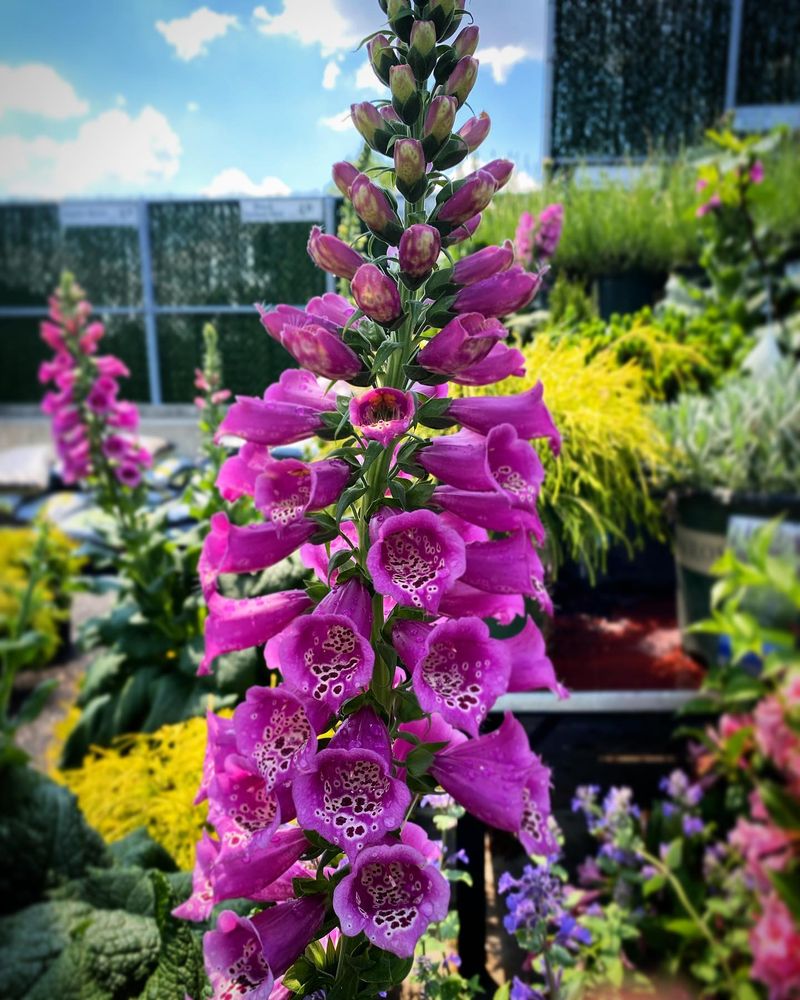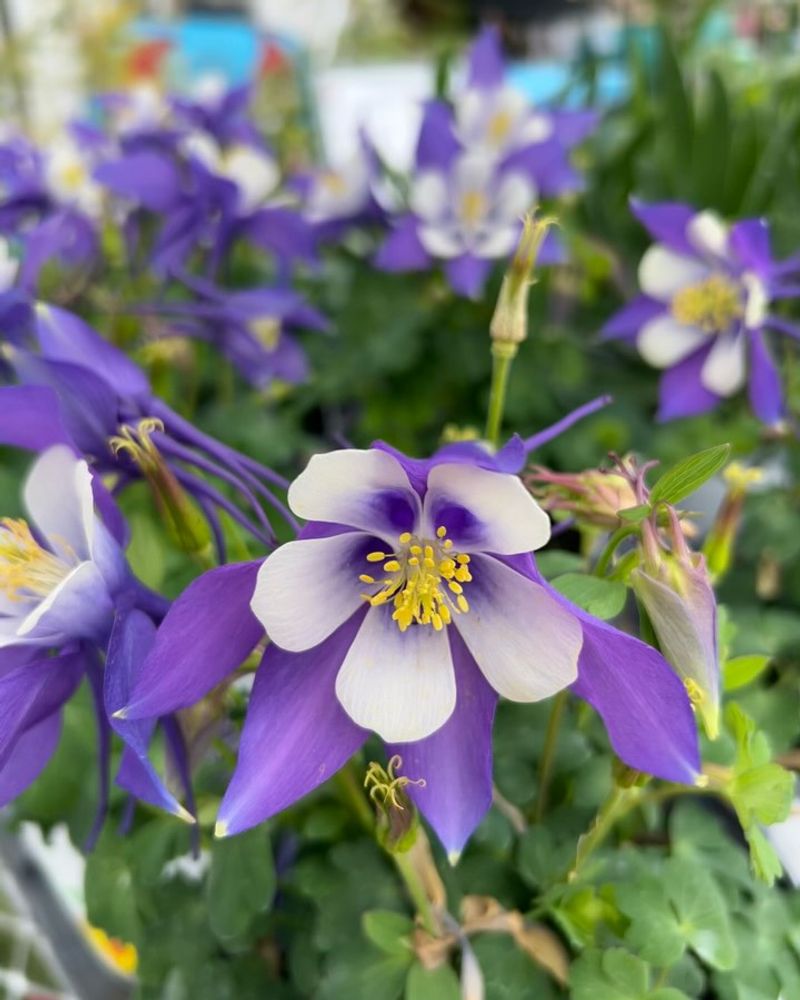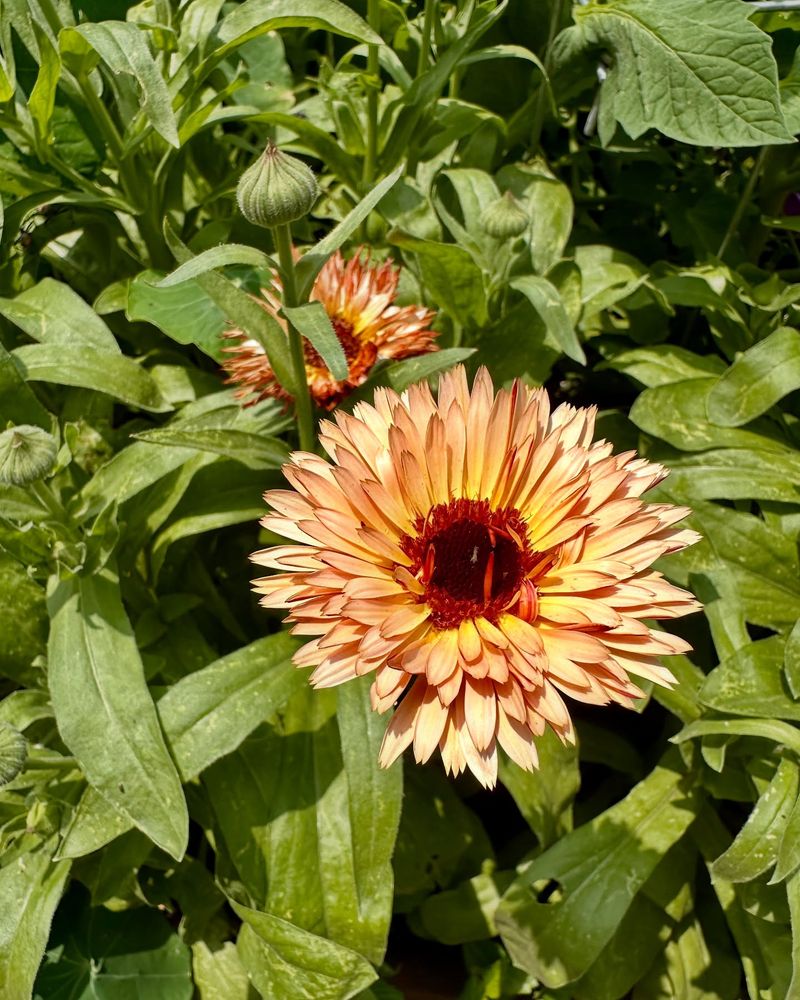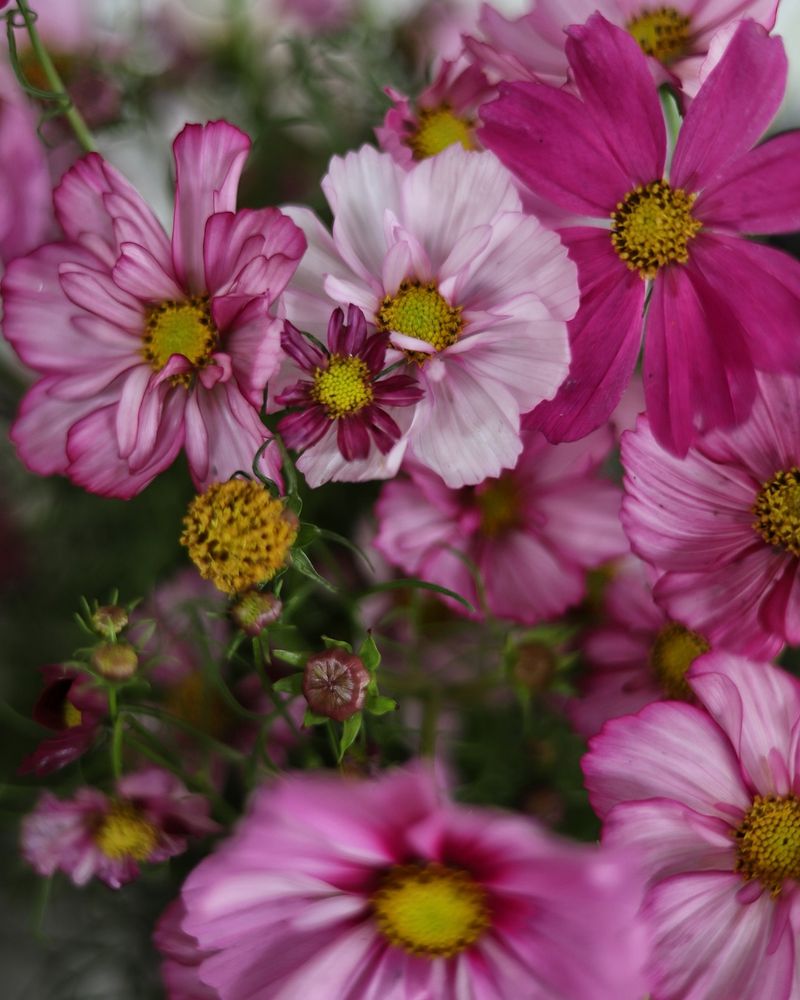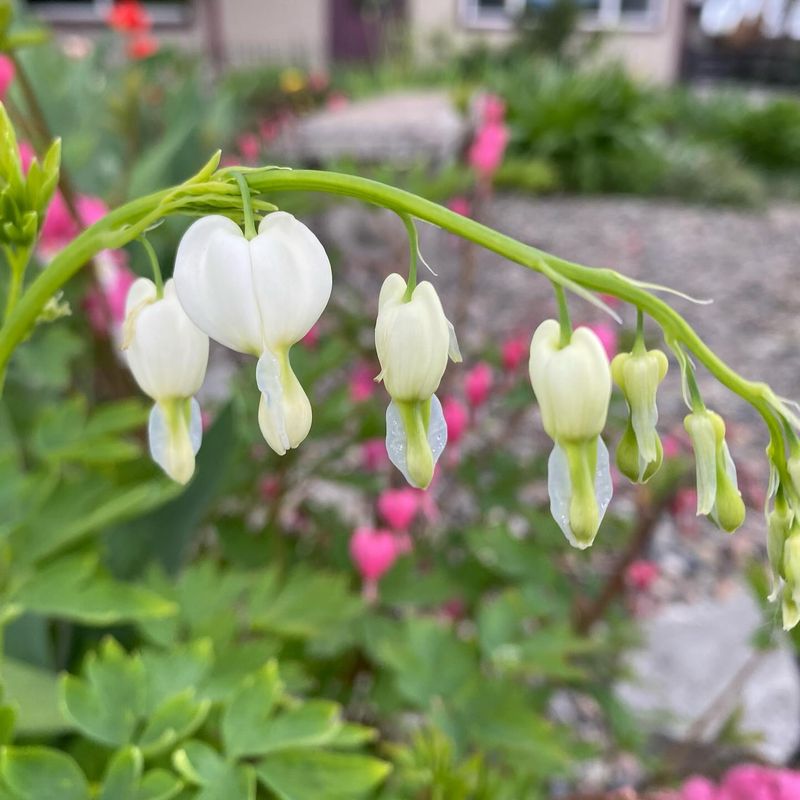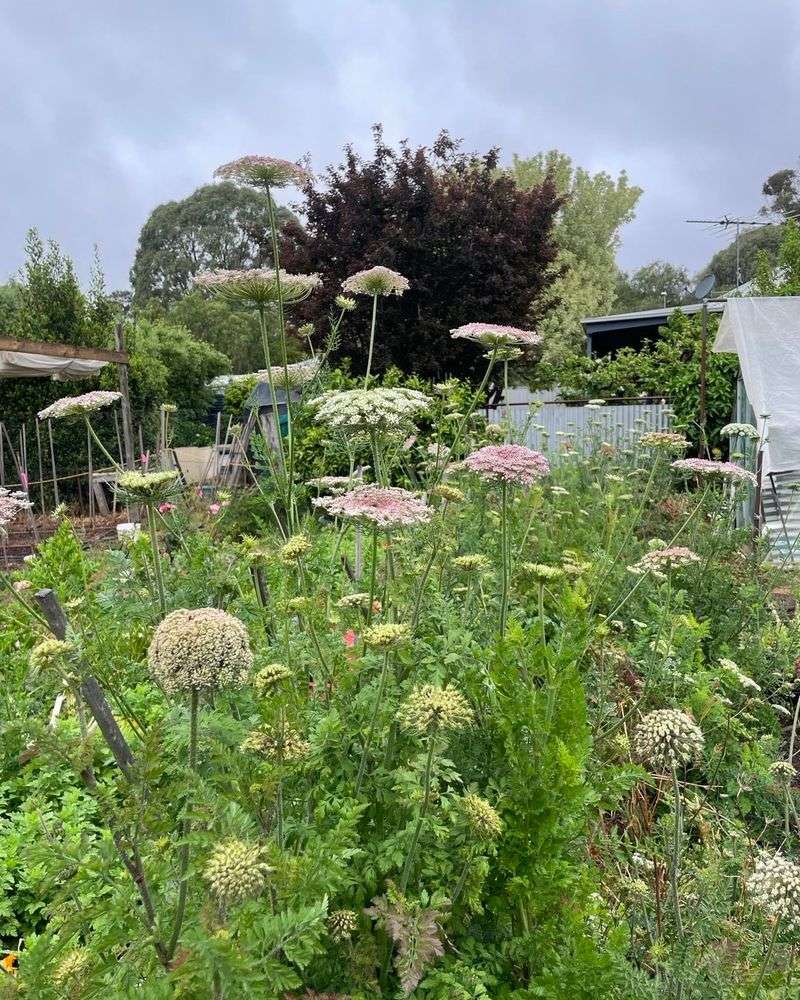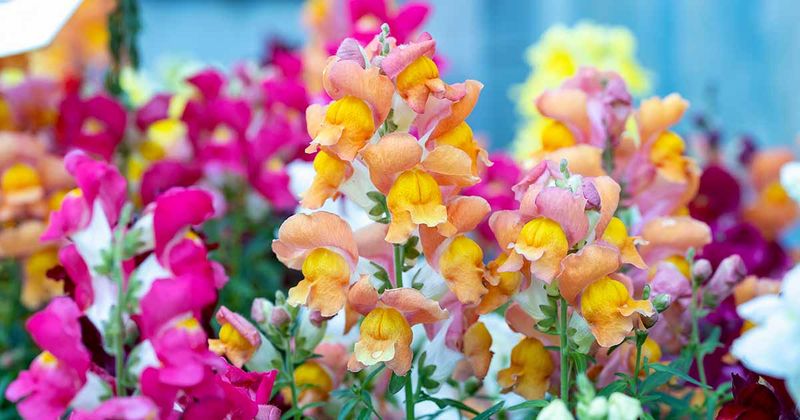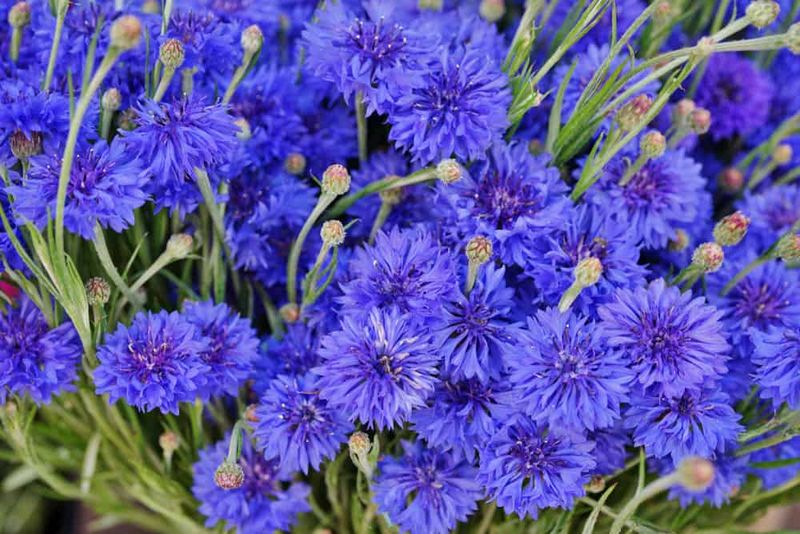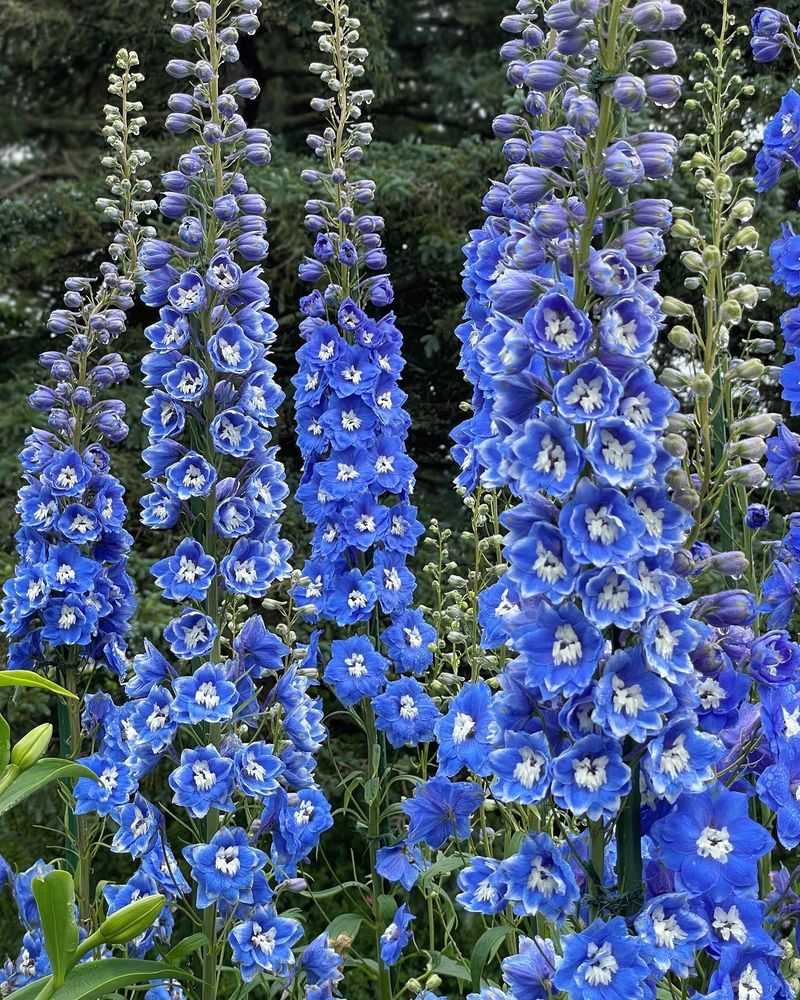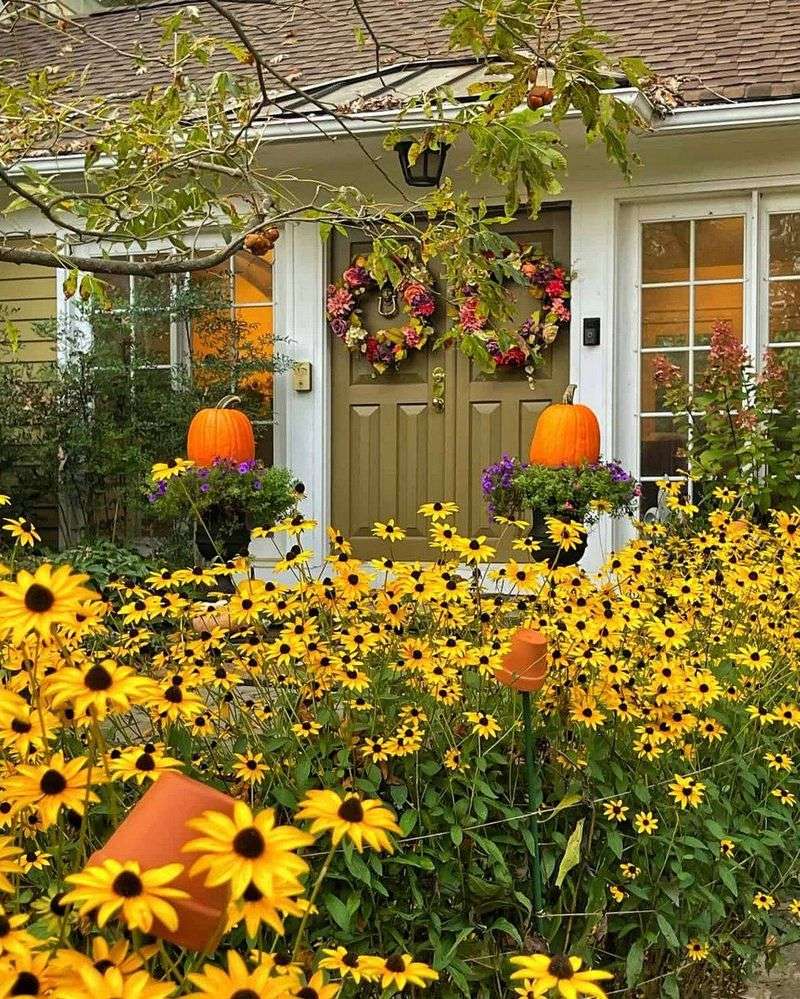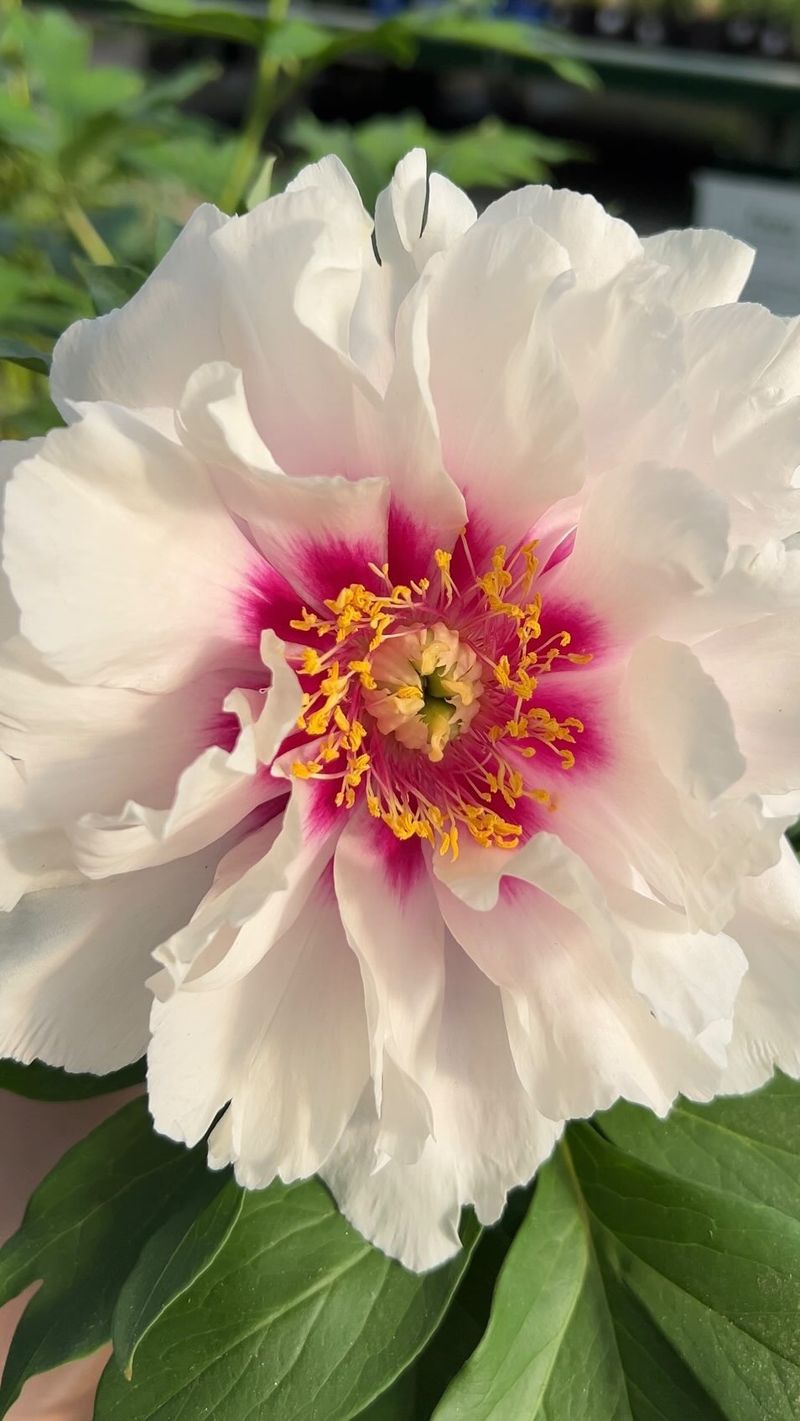Cottagecore gardens always remind me of old storybooks—those cozy scenes with flowers spilling over stone paths and bees lazily buzzing about.
There’s something comforting about that wild, slightly messy charm that makes everything feel alive and welcoming. It’s not about perfection here. It’s about softness, color, and the kind of beauty that feels like it just happened naturally, like nature decided to put on a show without trying too hard.
If you’re dreaming of a backyard that feels like a quiet countryside escape, these sixteen flowers will help bring that nostalgic, romantic vibe to life—no white picket fence required.
1. Lavender Waves
My pathway needed something special, and lavender turned out to be exactly that. The silvery-green foliage creates a beautiful backdrop even when it’s not flowering.
Bees visit constantly when the purple spikes appear, bringing my garden corner to life with gentle buzzing. I’ve found English lavender varieties to be the most reliable in my climate.
Cutting back about a third after flowering keeps the plants from getting too woody. I dry bunches to hang indoors, extending that summer garden feeling well into winter.
2. Cheerful Hollyhocks
Against my garden fence, hollyhocks stand like colorful sentinels, some reaching well over six feet tall. Their paper-thin blooms in shades of pink, white, and deep burgundy open progressively up the stalks.
What surprised me most was how they self-seed so enthusiastically. Now I have volunteer plants appearing in charming spots I wouldn’t have thought to place them.
Though technically biennials, mine return reliably year after year. I’ve learned to stake the tallest ones early in the season to prevent them from toppling during summer storms.
3. Forget-Me-Not Clusters
These tiny blue flowers might seem insignificant individually, but when they spread into drifts, they create the most enchanting spring picture. I first scattered seeds near my apple tree, not expecting much.
Now they return each year, filling gaps between perennials before summer bloomers take over. Their sky-blue color with yellow centers feels like something from a watercolor painting.
I’ve stopped considering them weeds and instead welcome their cheerful presence. They’re perfect companions for spring bulbs, covering the fading foliage as tulips and daffodils finish their show.
4. Sweet Pea Climbers
The scent stops me in my tracks every time I pass my sweet pea trellis. Nothing compares to that distinctive fragrance that somehow captures the essence of an old-fashioned garden.
Growing them from seed has become a late-winter ritual that helps me through the last cold days. I soak the seeds overnight and plant them in toilet paper tubes to give them a head start.
Regular cutting actually encourages more blooms, so I bring small bouquets inside all summer. The heirloom varieties with their ruffly petals and intense colors have completely outperformed newer types in my experience.
5. Rambling Roses
Unlike their hybrid tea cousins, these roses don’t demand constant attention. Mine tumble over an old garden arch, creating a moment of garden magic each June when they burst into bloom.
The petals have a delicate, almost translucent quality that modern roses seem to have lost. I’ve found ‘Albertine’ and ‘Félicité Perpétue’ to be particularly carefree, with just one major flush of flowers but what a show it is.
Last year, I trained a young shoot horizontally along my fence, and it responded by sending up flowering stems all along its length—a trick worth trying in any cottage garden.
6. Foxglove Spires
Finding the right spot for foxgloves took some trial and error. Eventually, I discovered they thrive in that tricky part-shade area under my maple tree where not much else wants to grow.
The speckled throats of each bell-shaped flower fascinate me—nature’s own little art project. Bumblebees disappear completely inside the blooms, emerging dusted with pollen.
Though they’re biennials, I’ve created a continuous display by allowing some to set seed each year. Just remember all parts are toxic, so I’m careful where I place them in relation to children’s play areas.
7. Dancing Columbines
The nodding heads of columbines seem to dance with every breeze that passes through my garden. I started with just three plants tucked between some stones along a pathway.
Now they’ve cross-pollinated into countless color combinations I never would have found at a nursery. The blue and white ones remain my favorites, looking like little paper lanterns hanging above their lacy foliage.
Early hummingbirds make a beeline for them every spring. After flowering, I cut back about half the plants to keep the garden tidy, but leave the rest to set seed and surprise me with new color forms next year.
8. Cheerful Calendulas
The vegetable garden felt utilitarian until I edged it with calendulas. Their sunny orange and yellow blooms brighten even the dreariest days, appearing from early spring until the first hard frost.
Beyond their good looks, they’ve earned their keep by attracting pollinators to my tomatoes and squash. I’ve even tossed their petals into summer salads for a peppery bite and splash of color.
Deadheading keeps them blooming continuously, though I always let a few go to seed. The curved seed pods look like little crescent moons and guarantee more plants next season without any effort on my part.
9. Cosmos Clouds
When summer heat wilts everything else, cosmos keep on blooming. I scattered seeds in a bare patch of ground last spring where nothing else would grow because of the poor soil.
They’ve rewarded me with airy stems topped with simple daisy-like flowers in shades of pink and white. Their feathery foliage adds a softness to the garden that feels intentional rather than wild.
Cutting them for bouquets only makes them branch out and produce more flowers. I’ve stopped deadheading in late summer, allowing the seed heads to feed finches and chickadees well into fall.
10. Delicate Bleeding Hearts
Under the dappled shade of my crabapple tree, bleeding hearts emerge early each spring. Their arching stems lined with heart-shaped blooms create a moment of pure delight before many other perennials have even woken up.
The traditional pink varieties have been reliable, but I’ve fallen for the white ‘Alba’ with its ghostly, luminous quality. By midsummer, they’ve often disappeared entirely, resting until next spring.
I’ve learned to plant late-emerging perennials like hostas nearby to fill the space they leave behind. Together with spring bulbs, they create that layered look that makes cottage gardens feel so abundant.
11. Lacy Queen Anne’s Lace
Some might call it a weed, but I deliberately welcome Queen Anne’s Lace into certain garden areas. The flat, intricate white flower heads add a frothy texture that softens the more structured plants around them.
A single plant appeared along my fence line years ago, and I’ve been selectively allowing its offspring to remain ever since. The flowers attract tiny beneficial wasps that help control aphids on my roses.
I’ve found cutting the stems when the flowers first open makes them last nearly a week in arrangements. Just be mindful—they can spread enthusiastically if every seed head is left to mature.
12. Playful Snapdragons
Children visiting my garden head straight for the snapdragons. Teaching them to gently pinch the sides to make the “dragon mouths” open and close never fails to delight.
I’ve tucked them into sunny spots near my garden bench where their spires of color stand at perfect height for appreciation. What started as nursery-bought plants have now self-seeded into subtle color variations I could never find in stores.
Though technically perennials in mild climates, I treat them as reseeding annuals. The volunteers that survive winter are always stronger than anything I could plant in spring.
13. Bountiful Bachelor’s Buttons
The clear blue color of bachelor’s buttons reminds me of my grandmother’s garden. I scattered seeds in a sunny border that needed something drought-tolerant, and they’ve been reliable companions ever since.
Their fringed petals have an almost cornflower-blue intensity that stands out among softer garden colors. Pollinators flock to them all summer long, creating a constant hum of activity.
Last year I discovered the stems make perfect cut flowers, lasting over a week indoors without dropping petals everywhere. I now leave plenty for the garden while still enjoying casual bouquets throughout summer.
14. Dreamy Delphiniums
After several failed attempts, I finally succeeded with delphiniums by giving them exactly what they need: rich soil, morning sun, and shelter from strong winds. The reward has been worth the effort—towering spires in shades of blue that seem to touch the sky.
I’ve learned to stake them early in the season with bamboo supports that disappear among the foliage. Their bloom coincides perfectly with early roses, creating that classic cottage garden combination.
Cutting the main flower stalk after it fades often encourages smaller side shoots to develop, extending the display. I divide the clumps every few years to maintain their vigor.
15. Sunny Black-Eyed Susans
Late summer would feel empty without black-eyed susans bringing their golden cheer to the garden. I planted just three small pots along my picket fence four years ago.
Now they’ve formed generous clumps that require dividing every few seasons. Their daisy-like blooms with distinctive dark centers keep going well into fall when many other perennials have finished.
Goldfinches visit regularly to feast on the seeds if I leave the spent flowers standing. The seed heads also add winter interest with their geometric silhouettes catching frost on cold mornings.
16. Romantic Peonies
The anticipation of peony season makes spring gardening all the more exciting. My grandmother’s divided plants have established themselves in my garden, connecting me to family history every time they bloom.
Their massive, fragrant flowers in soft pink and cream seem almost too perfect to be real. I’ve learned to use peony cages early in spring to keep the heavy blooms from flopping after rain.
Ants crawling over the buds aren’t harmful—they’re just enjoying the sweet nectar. One mature plant provides enough cut flowers for multiple arrangements, though I always leave plenty in the garden to enjoy.

